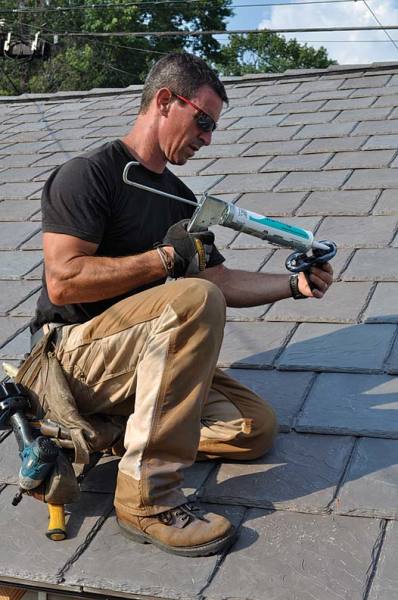It’s easy to go for the cheapest option when buying a caulk gun—but a quality model will see you through many projects.
There’s an old adage that goes, “Caulk and paint makes a carpenter what he ain’t.” While this saying diminishes carpenters and DIYers who work hard to create accurate cuts and tight joints without the need for caulk, I personally find caulk—along with sealants and adhesives—to be an essential element on almost every project I tackle. No matter what the goop or where it goes, it all gets applied the same way: with a caulk gun. That makes it a very important tool in your arsenal.
Where To Use It
A caulk gun (also called a “frame”) comes in handy when applying adhesives, sealants, and fillers to dozens of different old-house projects—like gluing cleats to the backs of crown moldings to even out scarf joints or caulking gaps around bathtubs for a watertight seal. I also use plenty of polyurethane sealant for detailing flashing assemblies for a chimney, porch roof, or deck ledger board.
What To Look For
I’m baffled when I visit a job site or workshop and see cheap, throwaway caulk guns hanging on the wall. These may be fine for one-time use, but for people with a whole house restoration in front of them, I recommend buying a higher-quality tool.
There are two types of caulk gun: a smooth-shank plunger and a ratcheting plunger. They are easy to tell apart—the ratcheting type’s plunger has little teeth, while the smooth-shank plunger is smooth. In general, a frame with enough mass to resist the force of lots of squeezing is key. These well-constructed frames also will give you a nice, consistent bead of caulk or adhesive. Other features that set good-quality guns apart include:
Tube cutter. While a utility knife is perfectly fine for cutting the tops off caulk tubes, I don’t always have one on me. A tube cutter allows you to cut the nozzle of the tube by squeezing the handle of the gun.
Poker. I don’t even bother buying a caulk gun that doesn’t have a poker, which pierces the foil covering of the caulk tube down inside the spout. This saves me from fishing around for a nail to open new caulk tubes.
Hook handle. Because of the nature of my work—climbing ladders, sitting on roof peaks, working on windows—I need a place to put my caulk gun when it’s not in use, whether that’s hanging from my tool belt or hooked over the chimney. The best caulk guns have a C- or L-shaped handle so you can easily hang them anywhere.
Trigger. Also consider how wide you’ll have to spread your hand to get a firm grip on both the handle and trigger. A nice caulk bead is an art in itself and must be applied as steadily and as evenly as possible. If you have to crank on the handle to get the caulk to flow, that’s not very smooth at all.
The Bottom Line
While not a panacea for the sins of bad carpentry, caulk, sealant, and adhesive are nevertheless essential restoration materials. Investing now in a good-quality caulk gun will save you from mess, fatigue, and wasted time down the road.







